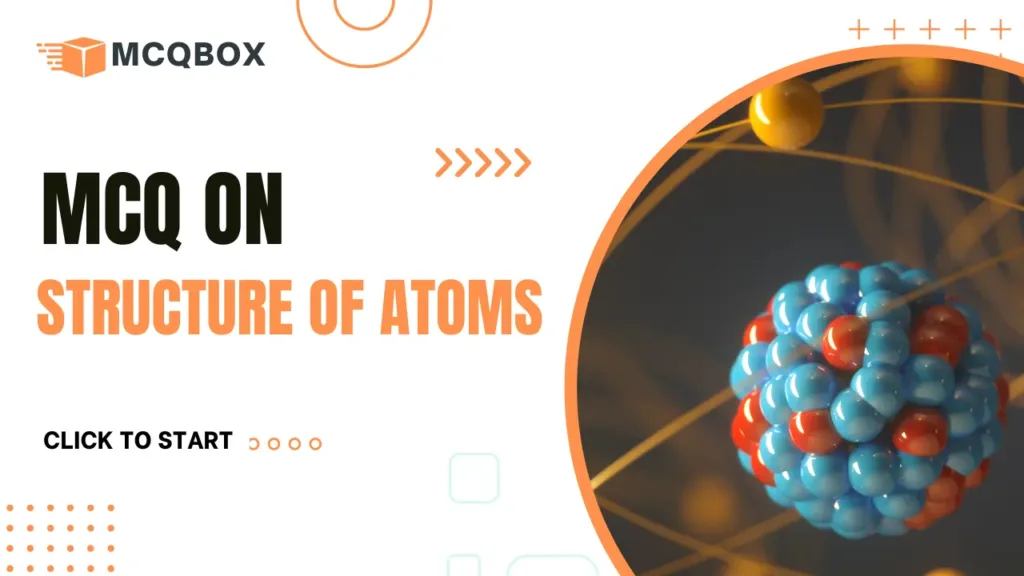Test your knowledge and sharpen your skills with this MCQ on the Structure of Atoms for UPSC and other Competitive Exams 2024!
Table of Contents

MCQ on Structure of Atoms for UPSC
1. Who proposed the “plum pudding model” of atomic structure?
a) John Dalton
b) J.J. Thomson
c) Ernest Rutherford
d) Niels Bohr
Answer: b) J.J. Thomson
2. Which scientist discovered the atomic nucleus?
a) John Dalton
b) J.J. Thomson
c) Ernest Rutherford
d) Niels Bohr
Answer: c) Ernest Rutherford
3. What experiment led Ernest Rutherford to propose the atomic nucleus?
a) Cathode Ray Experiment
b) Alpha Ray Scattering Experiment
c) Oil Drop Experiment
d) Double-Slit Experiment
Answer: b) Alpha Ray Scattering Experiment
4. Which of the following statements is true regarding Bohr’s atomic theory?
a) Electrons move in continuous orbits around the nucleus.
b) Electrons can occupy any energy level without restriction.
c) Electrons can only absorb or emit energy when transitioning between energy levels.
d) Electrons move in random paths within the atom.
Answer: c) Electrons can only absorb or emit energy when transitioning between energy levels.
5. Which principle states that no two electrons in an atom can have the same set of quantum numbers?
a) Aufbau’s principle
b) Pauli’s exclusion principle
c) Hund’s rule
d) Heisenberg’s uncertainty principle
Answer: b) Pauli’s exclusion principle
6. What is the charge of a proton?
a) -1e
b) 0
c) +1e
d) It varies
Answer: c) +1e
7. Who proposed the idea of quantized energy levels for electrons in atoms?
a) John Dalton
b) J.J. Thomson
c) Ernest Rutherford
d) Niels Bohr
Answer: d) Niels Bohr
8. What experiment provided evidence for the existence of electrons?
a) Alpha Ray Scattering Experiment
b) Cathode Ray Experiment
c) Oil Drop Experiment
d) Double-Slit Experiment
Answer: b) Cathode Ray Experiment
9. Which subatomic particle is found in the nucleus of an atom?
a) Electron
b) Neutron
c) Proton
d) Positron
Answer: c) Proton
10. According to Bohr’s atomic theory, in which type of orbit do electrons remain stationary?
a) Elliptical orbits
b) Circular orbits
c) Irregular orbits
d) None of the above
Answer: b) Circular orbits